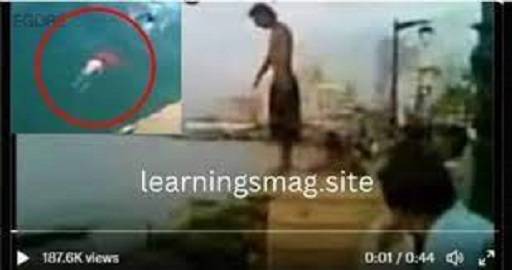Physical Address
304 North Cardinal St.
Dorchester Center, MA 02124
Scuba diving is an exhilarating and adventurous activity that allows enthusiasts to explore the mesmerizing underwater world. However, like any adventure sport, it carries inherent risks that demand careful preparation, training, and adherence to safety protocols. One such risk is the split-face diving accident, a rare but potentially life-threatening incident that underscores the importance of safety in scuba diving.
In this comprehensive article, we’ll delve into the world of split-face diving accidents, exploring the causes, consequences, and most importantly, how to prevent them. Whether you’re a seasoned diver or a novice contemplating your first dive, this article will provide valuable insights and guidance for ensuring your safety beneath the waves.
Before we dive into the specifics of split-face diving accidents, let’s clarify what split-face diving actually is. Split-face diving, also known as “cave diving,” involves exploring underwater caves and caverns, which often split face diving accident have narrow passages and challenging navigation. Unlike open-water diving, split-face diving requires specialized training, equipment, and a deep understanding of cave environments.

One of the primary causes of split-face diving accidents is the absence of adequate training. Cave diving demands a unique skill set, including buoyancy control, guideline management, and navigation in confined spaces. Novice divers who venture into cave environments without proper training significantly increase their risk of accidents.
Prevention:
Faulty or inadequate equipment can spell disaster in the cave environment. Regulators, dive lights, and buoyancy control devices must be in pristine condition to ensure safe cave exploration. A single equipment failure can lead to panic and disorientation, increasing the risk of a split-face diving accident.
Also Read : Lapis Lazuli Steven Universe: Unraveling the Mysteries of a Beloved Gem
Prevention:
Cave environments often feature limited visibility due to silt stirred up by divers or low-light conditions. This reduced visibility can make navigation challenging and increase the risk of becoming disoriented or entangled in guidelines.
Prevention:
Cave divers must adhere to strict depth and time limits to prevent decompression sickness and oxygen toxicity. Pushing these limits can lead to a dangerous situation, as ascending too quickly can result in injury or death.
Prevention:
Split-face diving accidents can have dire consequences, including:
Split-face diving is a thrilling and challenging aspect of scuba diving, but it’s not without its risks. Safety must always be the top priority for anyone considering cave diving. Adequate training, proper equipment maintenance, adherence to guidelines, and respecting depth and time limits are crucial elements in mitigating the risks associated with split-face diving.
Remember, the underwater world is a breathtaking place to explore, but it can also be unforgiving. By understanding the potential dangers and taking appropriate precautions, you can ensure that your split-face diving adventures are not only thrilling but also safe and enjoyable. Dive responsibly, and may your underwater journeys be filled with wonder and awe.
An unsettling and unsettling video depicting the infamous Split Face Diving tragedy has resurfaced unexpectedly. The distressing footage of this tragic occurrence, originally unfolding in 2009, has once again emerged across various social media platforms, provoking a strong reaction of shock and sorrow among viewers. This deeply disturbing video, now commonly referred to as the Split Face Diving incident, has abruptly seized the focus of social media users, particularly those engaged on platforms like Twitter and Reddit, despite lying dormant for more than a decade. In the upcoming sections, we delve deeply into the specifics of this harrowing event, urging you to persist in your reading to gain a comprehensive grasp of the situation. For further information, continue scrolling downward.
Initially, the striking video of the Split Face Diving incident was posted on Reddit by a user going by the moniker Zombiedub. More than ten years have elapsed since this haunting clip made its debut online. In the digital age, once content finds its way online, it’s almost impossible to completely delete or halt its resurgence. The video of the Split Face Diving tragedy is testament to that, reappearing even after such a long interval. Its return has elicited a flurry of profound responses from the online community. Continue reading to delve deeper into this occurrence.
SarkariExam reports that the Split Face Diving accident occurred in June 2009 and involved a teenager from Beirut. The unfortunate youngster was only 16 years old at the time of the incident, which took place near the Manara Promenade, opposite the American University. The viral video of the incident shows the brother of the victim successfully executing a dive into the sea from a height of 40 feet. The tragedy unfolded when the teenager collided with a concrete surface before falling into the sea. We invite you to scroll further for additional details.
The consequences of the accident were devastating. The boy who hit the concrete surface before plunging into the ocean required immediate assistance from the Civil Defense, a fact made painfully clear by a bystander who witnessed the event. The bystander can be heard on the video screaming in Arabic and calling for help from the civil defense. The video then cuts to a scene from an emergency room in an American University Hospital. Despite the medical team’s best efforts to keep the 16-year-old boy’s face intact and maintain an open airway, the boy tragically succumbed to his severe injuries two days later. Stay with us for further updates.
Communications in recent times have been abuzz with the resurgence of an unfortunate event that took place in 2009, a diving accident that has now resurfaced in the form of a video. Known infamously as the Face Cut up Coincidence 2009 or Diving Face Cut up Video, the footage has become a hot topic of debate and speculation.
The Diving Accident Video
The incident, as captured in the video, is a gut-wrenching spectacle of a person attempting to dive from a bridge into the water, but meeting with an accident instead. The man’s face brutally splits open upon impact, a sight that was horrific for onlookers who had to witness the event in person. The images of this accident found their way to various media platforms, causing an uproar. The controversy escalated when the video surfaced on social media platforms like Reddit and Liveleak.
Watch Viral video here
The report states that the images re-emerged on the Internet in 2023, this time on the popular platform TikTok, causing a shockwave amongst viewers. The video was initially shared on Robert Lindsay’s weblog, and later on Twitter in late 2009. With its appearance on YouTube and other social media platforms, it garnered significant attention. This isn’t the first instance of a distressing video raising questions and causing a stir among viewers.




